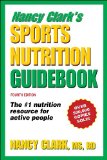In a Nutshell:
Iron is an important component of haemoglobin and many enzymes which are involved in energy metabolism.
In-depth:
Our bodies contain 4 to 5 g of iron. It is an important element of haemoglobin. Haemoglobin is the oxygen transport of the body. About 70% of the total amount of iron in the body is found in the oxygen-binding-protein haemoglobin. Iron is also needed for the composition of myoglobin which stores oxygen in the muscles. Iron-carrying enzymes are involved in the transformation of beta-carotene into vitamin A and the formation of collagen which is important for healthy gums, teeth, cartilage and bones.
Requirement, deficiency and oversupply:
Recommended intake according to the DGE* |
Age |
Male |
Female |
19 - 25 |
10 mg |
15 mg |
25 - 51 |
10 mg |
15 mg |
51 - 65 |
10 mg |
10 mg |
over 65 |
10 mg |
10 mg |
*Deutsche Gesellschaft für Ernährung - a German Nutrition Society.
It is rare that an iron deficiency takes place as a result of eating insufficient amounts in food. It is usually caused by a disrupted absorption in the stomach-intestinal tract as well as a deficient storage in the liver. The following factors can affect the absorption of iron: tea, medications such as tetracycline, antacid, cortisone and the pill, an infected intestinal mucosa (caused by allergies or fungi). Chronic losses of blood or strong periods can, of course, also lead to low iron levels.
Anaemia is a condition where the body does not get sufficient amounts of iron. The symptoms are fatigue, shortness of breath, exhaustion, paleness and a noticeable reduction of energy.
Iron utilisation is enhanced by vitamin C. Phytin, phosphate and tannic acid (black tea and coffee) form complexes with iron and therefore prevent absorption from taking place.
An overdose of iron (siderosis) usually only occurs if great amounts are consumed in the form of iron supplements. A typical characteristic of siderosis is the distinct grey discolouring of the skin.
top  |
Iron in Food:
Good iron sources are red meat and liver. Vegetables, whole meals products and legumes also contain a lot of iron.
Iron in 100 g food:
Sorghum: 9 mg
Wheat germ: 7.95 mg
Oats: 4.6 mg
Rye bread: 2.65 mg
Chanterelles: 6.5 mg
Spinach: 4.1 mg
Lentils: 7.5 mg
Peas: 5.0 mg
White beans: 6.17 mg
Beefs: 2.26 mg
Pork cutlet: 1.7 mg
Pork liver: 15.8 mg
Calf's liver: 7.9 mg
The body can utilise iron that comes from animal foods better than it can utilise iron from plant foods. The reason for this is that plant iron forms complex compounds with other nutrient components (e.g. phytic acid in whole meal products, tannic acid in tea and coffee, and oxalic acid in spinach) and that these complexes must be broken down in the body before they are utilised.
top 

Exposing the Hidden Dangers of Iron: What Every Medical Professional Should Know About the Impact of Iron on the Disease Process

Nancy Clark's Sports Nutrition Guidebook
Nancy Clark

The Complete Book of Food Counts, 9th Edition: The Book That Counts It All
|

